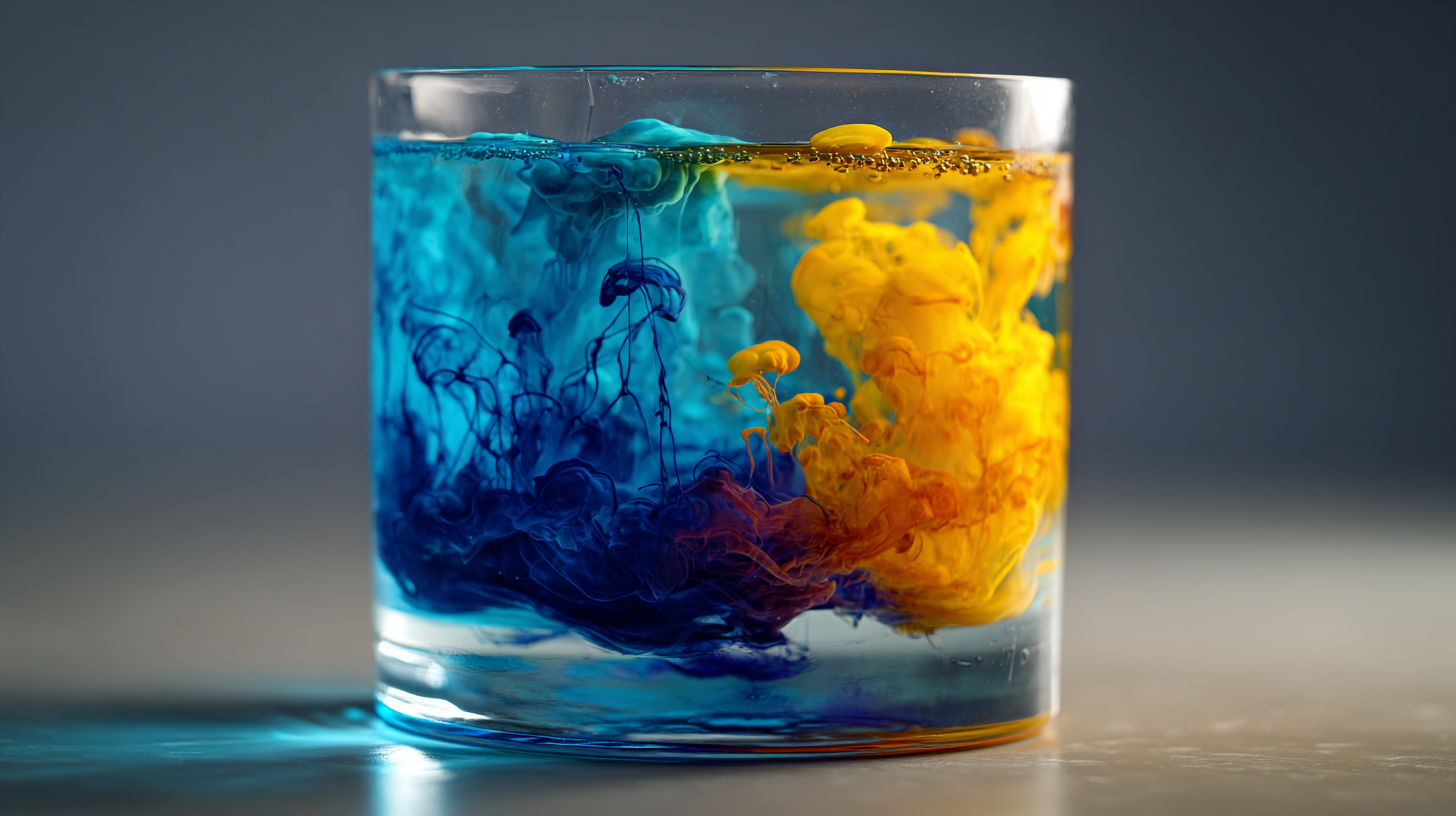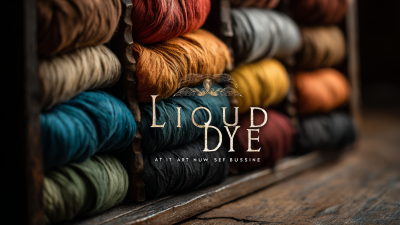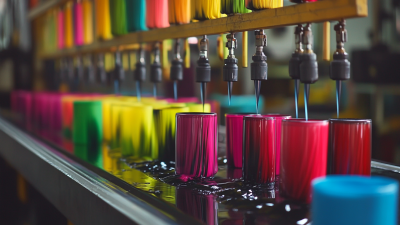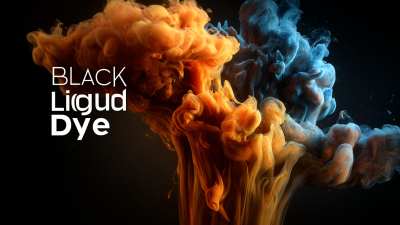The fascinating world of "Liquid Dye" plays a pivotal role in various industries, from textiles to food and cosmetics. According to a recent report by MarketsandMarkets, the global liquid dye market is projected to reach $6.1 billion by 2025, growing at a CAGR of 4.2% from 2020 to 2025. This remarkable growth highlights the increasing demand for vibrant colors that enhance product appeal and consumer experience.

Liquid dyes are not only essential in aesthetic applications but also play a critical role in functional aspects, such as UV protection and antimicrobial properties. As we delve into the intricate science behind these color transformations, we uncover how liquid dyes are intricately woven into the fabric of our everyday lives, influencing everything from fashion trends to food presentation.
Understanding the mechanism of color change in liquid dye applications not only broadens our knowledge but also opens new avenues for innovation in multiple sectors.
Liquid dyes play a crucial role in various applications due to their dynamic color properties, which can significantly shape our visual experience and material usage. The chemistry behind these dyes involves a range of compounds that react to environmental stimuli, leading to phenomena such as color morphing. For instance, photochromic materials can change their hue under different lighting conditions, providing practical uses in everything from fashion to advanced material design. This adaptability not only enhances aesthetic appeal but also contributes to functional applications, such as stress visualization in plastics, where color-changing dyes indicate external stresses and aid in developing more resilient materials.
Moreover, the exploration of natural colorants, including pigments sourced from fungi, reflects a growing trend toward sustainable alternatives to synthetic dyes. The synthesis of biobased, acid-sensitive colorimetric sensors demonstrates innovative approaches in using natural polyphenols and amino acids for dye production. This shift is motivated by increasing awareness of the environmental impacts of synthetic colorants and the benefits of harnessing nature's palette. Through advancements in nanotechnology, new types of materials, such as edible cellulose-based plastics, showcase how color can be achieved without traditional dyes, highlighting the intersection of chemistry, sustainability, and design in the evolving landscape of liquid dyes.
This chart illustrates the intensity levels of various liquid dye colors. The intensity values are represented on the Y-axis, while the different colors are shown on the X-axis, highlighting the diverse properties of liquid dyes.
Liquid dyes play a crucial role in various industries, transforming materials and enhancing visual appeal. In textiles, for example, liquid dyes are essential for achieving vibrant colors that can resist fading over time. The versatility of these dyes allows manufacturers to produce a wide array of patterns and designs, meeting diverse consumer demands. Innovations in dyeing techniques, including eco-friendly alternatives, ensure that the industry can push for sustainability without sacrificing quality.

In the food industry, liquid dyes are used to enhance the appearance of products, making them more appealing to consumers. Natural and synthetic dyes can be found in everything from candies to beverages, creating colors that entice and influence purchasing decisions. Beyond food and textiles, liquid dyes are also employed in cosmetics, pharmaceuticals, and even art, demonstrating their extensive impact across various sectors. This versatility highlights the importance of liquid dyes in shaping not only the aesthetic dimensions of products but also their marketability.
The stability of liquid dyes is significantly influenced by various environmental factors, including temperature, pH, and exposure to light. For instance, high temperatures can accelerate the degradation of certain dyes, leading to premature fading and altered hues. Similarly, variations in pH levels can alter the ionization of dye molecules, resulting in unexpected color changes. These factors not only affect the aesthetic quality of dyed materials but also determine their durability and usability in various applications.
Light exposure is another critical factor in dye color stability. Ultraviolet (UV) radiation can break down dye compounds, causing them to lose their vibrancy over time. This phenomenon, known as photodegradation, poses challenges for industries such as textiles and plastics, where colorfastness is crucial. As a result, understanding how these environmental conditions interact with liquid dyes is essential for developing more stable coloring agents, thereby ensuring the longevity of color in everyday materials.
| Dye Type | pH Level | Temperature (°C) | Light Exposure (Hours) | Color Stability Rating |
|---|---|---|---|---|
| Reactive Dye | 6-8 | 25 | 100 | Good |
| Acid Dye | 4-6 | 30 | 200 | Moderate |
| Direct Dye | 7-9 | 20 | 50 | Poor |
| Vat Dye | 8-10 | 40 | 300 | Excellent |
| Disperse Dye | 5-7 | 35 | 150 | Good |
The use of liquid dyes has revolutionized various industries, particularly textiles, cosmetics, and food production. Innovative techniques in color transformation are at the forefront of these advancements. According to a report by MarketsandMarkets, the global dye market is expected to reach USD 12.38 billion by 2025, showcasing an annual growth rate of 4.2%. This growth is driven largely by the demand for eco-friendly and efficient dyeing processes that utilize liquid dyes more effectively. Techniques such as digital inkjet printing and high-temperature dyeing offer precise control over color application, reducing wastage and enhancing accuracy.
Recent developments in nanotechnology have also begun to influence liquid dye applications. As highlighted in a study published in the Journal of Applied Polymer Science, incorporating nanoparticles into liquid dyes can enhance color vibrancy and durability, making them ideal for long-lasting applications. For example, using silver nanoparticles can provide antimicrobial properties in textiles, extending their lifespan while maintaining brightness. This combination of science and innovation not only helps in meeting consumer demands for aesthetically pleasing products but also addresses environmental concerns, paving the way for sustainable practices in color transformation.
When working with liquid dyes in creative projects, safety is paramount to ensure a successful and enjoyable experience. First and foremost, wearing protective gear is essential. This includes gloves to shield your hands from staining and possible skin irritation, along with a mask to prevent inhalation of any harmful fumes. Additionally, it’s advisable to work in a well-ventilated area, ideally outdoors or in a space with good airflow, to minimize exposure to any volatile compounds that may be released during the dyeing process.
Another critical tip is to always read the labels of the dyes and follow the manufacturer's instructions carefully. This includes understanding the proper handling techniques and the potential hazards associated with each dye. It's also beneficial to conduct a patch test on a small area before applying the dye to the entire project. This step can help you gauge both the color outcome and any possible allergic reactions. Lastly, ensure you have a cleanup plan in place. Using absorbent materials to address spills promptly, and having appropriate disposal methods for any leftover dye, will help maintain a safe and organized work environment.







